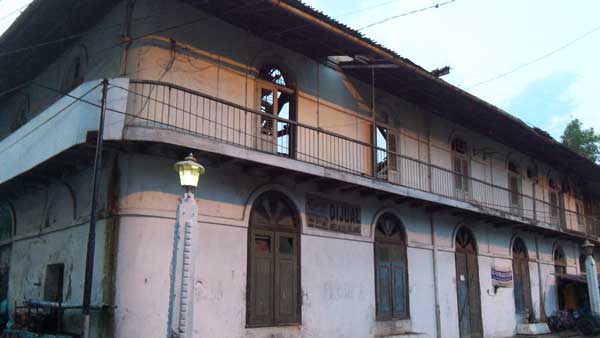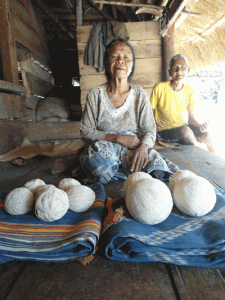Earlier this month, almost exactly a year after I started this Indonesian Odyssey, I finally set foot in Java. Except that I didn’t quite. As I clambered off the boat at Semarang before dawn, my feet plunged in to water, calf-deep. Semarang is Java’s third largest port; the Pelni boats were ranged four deep along the wharf. And every one of the thousands of passengers getting off here had to wade to dry land. Because Semarang is sinking.
The city is sinking at about 12 centimetres a year. It’s a story that is by no means unique; 40 percent of the nation’s capital is below sea level, too, and flooding is legendary. But it’s especially sad in the case of Semarang because the Old City, (Kota Lama), which nestles along canals very close to the port, has some of the most gracious colonial-era buildings in the country. Many of them, like the one pictured here with its folorn “Di Jual” (For Sale) sign, are crumbling into wrecks. Soon, they will be unsalvageable. And no-one wants to take them on, though the area could be a tourist attraction to rival Penang’s Georgetown (and Penang is getting well over 3 million visitors a year). To an extent, that might be because Indonesians find little to celebrate in their colonial history. But it’s also because even the most ardent fans of colonial history and architecture don’t want to have to wade to their hotels.
It would be possible to save Kota Lama by enclosing it in a polder, protecting the old buildings inside a giant dike. It is a big project, one in which the local government has shown little interest (not least, perhaps, because the Mayor is currently high and dry serving a 1.5 year term for corruption). Encouragingly, a group of local citizens, led by the Oen Semarang Foundation, are now taking matters into their own hands and trying to preserve the city while there’s still something to preserve. One aim is to get the city on UNESCO’s list of World Heritage Sites.
Next year, for the first time, Indonesia will have its own pavillion at the Venice Bienniale. The theme will be “sakti” (magic). Perhaps some of the magic of that other Sinking City will rub off on Indonesia, and this forgetful country will be encouraged to care for its heritage better.

